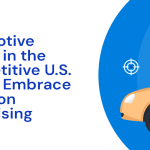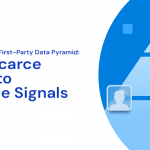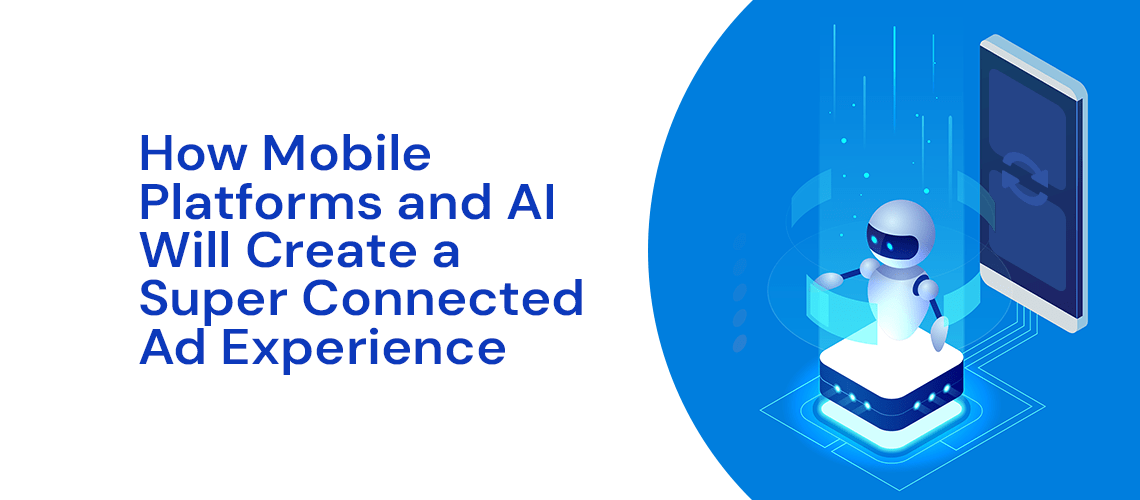
Automotive Brands in the Competitive U.S. Market Embrace Precision Advertising
July 31, 2025
The Advertiser’s First-Party Data Pyramid: From Scarce Seeds to Scalable Signals
November 11, 2025
Mobile advertising is the gateway to digital commerce for many brands now.
Chances are that consumers are likely first hearing about a new product or service, via their pocket computer, whether they are surfing in the walled garden internet, or via the Open Web and mobile apps. This is proven in the ad spending direction towards mobile, which is expected to dominate all other media channels.
Over the next five years, digital is projected to command 80%–85% of total ad spend, expanding at a CAGR (compound annual growth rate of 11%–13%. This is according to a report by Bain & Co released in August titled "Advertising in the digital age, in India and around the world.” Mobile will take a large part of that growth.
“Mobile devices dominate digital spend, accounting for nearly 70% (around US$470 billion) of total digital ad investments,” the Bain report said. “Within this, in-app advertising is the fastest-growing segment, fueled by rising mobile engagement, high-consumption video, and ad formats seamlessly integrated into the user experience. More consumers are also opting out of irrelevant content and app tracking.”’
The demand for intelligence-led targeting on mobile devices is only set to rise. Selecting the right mobile DSP will be even more crucial for agencies and brands as consumer use of mobile as the dominant is locked in. In the last decade the second generation of DSP’s have emerged to meet the performance marketing needs of advertisers targeting consumers in mobile apps, says mobile ad firm BigAds.
“In 2nd generation DSPs, the data science team and their Machine Learning arsenal form a crucial part of the task force, one that must think like both the end-user and the advertisers concurrently,” the BigAds blog noted. “They will research the best bidding and pricing strategy, user behavior, and journey while also looking at market trends in accordance with business goals, all with the aim of providing the smartest solution possible for predicting the right next moves.”

Sophisticated ad targeting
As this evolution towards more sophisticated audience targeting has emerged, programmatic advertising is no longer optional for mobile advertisers seeking scale, precision, and data-driven outcomes. It complements an advertiser’s current stack by filling in measurement gaps, unlocking new channels, and surfacing high-value users traditional platforms often miss.
In this environment, mobile audience data that is cleansed, refreshed and validated enables advertisers to execute campaigns via DSP’s that produce better performance.
The quality of non-PII data has always been crucial to ensure audience targeting and optimisation works, and a higher rate of on-target impressions are secured. Now, audience data and anonymized persona accuracy can be tested via LLM’s (Large Language Models), and assumptions over audience can be enhanced. The result is better return on ad spend via increased leads, as well as a lower cost per lead.
The Bain & Co report also notes that AI will become foundational to advertising. It says that adoption is moving beyond creative production to include AI-driven audience clusters based on purchase intent and engagement history, automated A/B testing and predictive performance modelling, real-time allocation and cross-channel attribution in media planning, ROI measurement, incrementality tracking, and spend optimization.
The key goals in a mobile advertising context correspond to the main stages in the consumer journey, including facilitating awareness, encouraging positive attitudes, increasing engagement, increasing conversion rates, encouraging repurchases, and prompting advocacy. With so much data whizzing around the web, and data privacy restrictions in place in most markets, advertisers are turning to AI to figure out how to reach the right target customers.

AI enters the execution phase
Many advertisers are already integrating AI and machine learning to predict churn and optimize ad placements. With the ability to analyze vast amounts of data in real time, AI and Machine Learning are powering the next generation of mobile advertising on a number of fronts.
This includes hyper-precise ad targeting, where AI models process user behavior, interests, and engagement patterns to serve highly personalized ads that increase relevance and conversion rates. AI software can also forecast which users are most likely to convert, helping advertisers prioritize high-value segments and optimize campaigns accordingly.
Mobile app marketing firm BidEase says that AI is designed to create more flexible and sophisticated solutions that push the boundaries of what was previously possible. The company says AI is improving product usability, streamlining workflows, and automating tasks at a level not previously possible.
“AI can also improve predictive analysis in privacy-centric environments, most notably by aggregating large pools of data and then generating new, simulated data,” BidEase said. By simulating data such as probabilistic user profiles, inferred interests, predicted behavior patterns, and modeled conversion paths, AI simulated data can help fill in the gaps (left by major ad platforms).”
AI powered media buying platforms are moving to a place whereby they will help brands to set campaign goals, allocate appropriate budgets, design mobile-friendly ad creative, and continuously monitor and enhance performance.
Technology will eventually take the ad industry into even more advanced frontiers. In the near future, mobile ad agencies will leverage AI for hyper-personalization and dynamic creative optimization, creating more immersive AR/VR experiences, embracing short-form video and social commerce. Conversational AI like chatbots have already emerged, and will enable brands to build a deeper understanding of their target customers.
The more brands find out about their customers the better the data they will have to communicate with them via advertising. AI will build super-connected mobile ad experiences that are less intrusive and more in line with a consumer’s product and service preferences.
With such a vast amount of the global population using mobile devices, AI is now supplementing traditional and still powerful machine learning tools to aid advertisers in their hunt for an improved return on their mobile web or app spend. The outcome will be more personalized ad targeting and better optimization.
